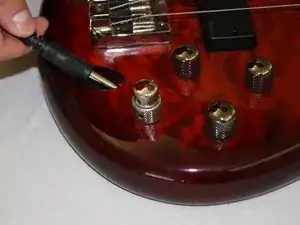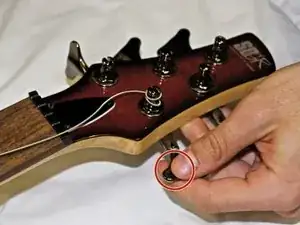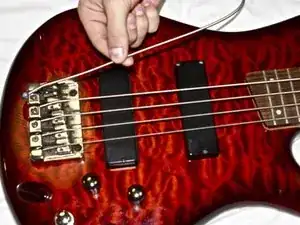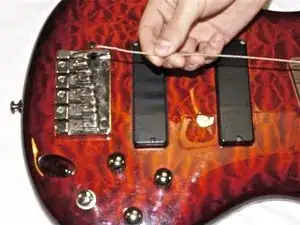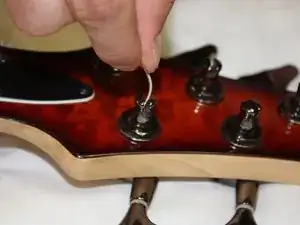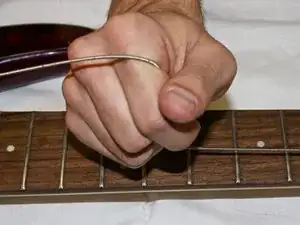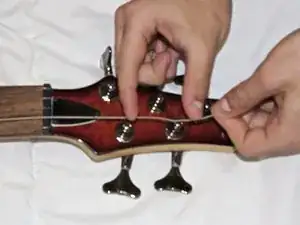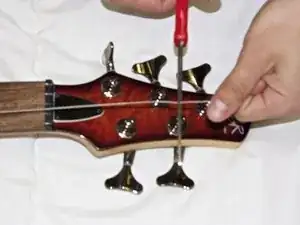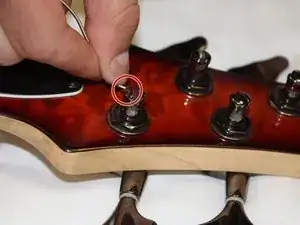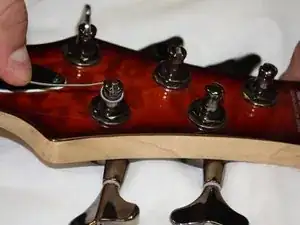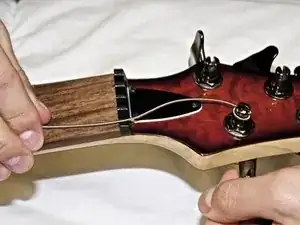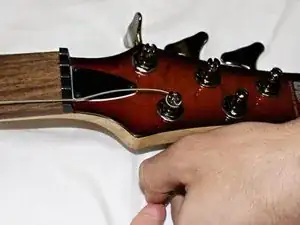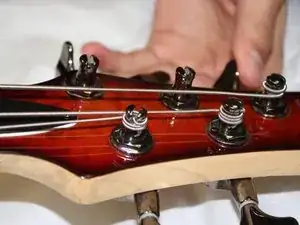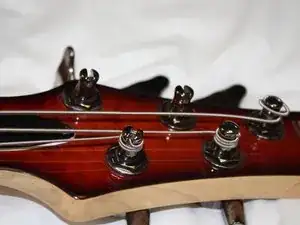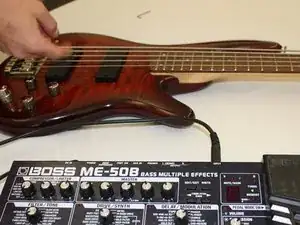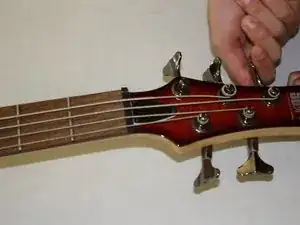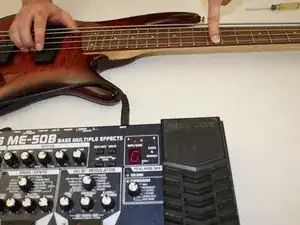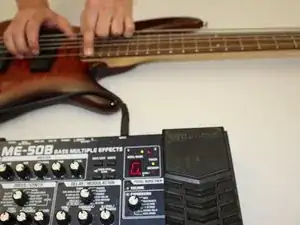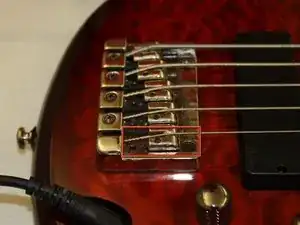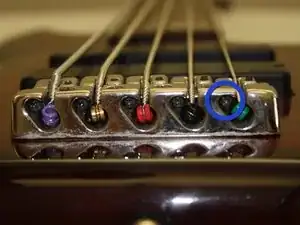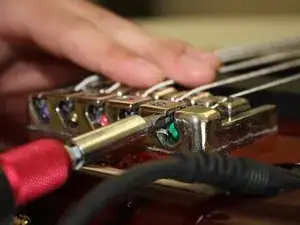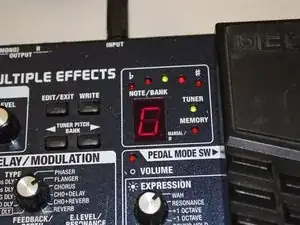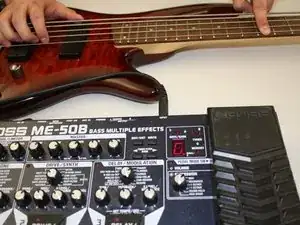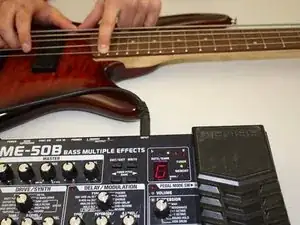Introduction
Although tuning the bass makes the open note correct, slight variations in fret length and the string type can affect the note at higher pitches.
In this guide we will change the length of the strings to better perfect the pitch of each note at higher frets.
Tools
-
-
Loosen all of the strings completely by turning each tuning peg counter clockwise. Continue until there is no tension in the strings
-
-
-
Remove each string by pulling it out of the string tree at the top and through the bridge at the bottom.
-
-
-
Thread the largest new string through the bridge hole farthest from the knobs. Hold it firmly in place.
-
-
-
On a taut string, measure one inch past the nut before using a pair of wire cutters to cut the string.
-
-
-
Use one hand to maintain tension in the string by grabbing the string and rotating the hand toward the fret board.
-
-
-
Rotate the tuning peg counterclockwise until the string is slightly taut, but not tight.
-
Check to ensure that the string is lined up with the proper notch in the nut.
-
-
-
Tighten the string until it is close to the proper tuning. Use an electronic tuner or an online tuner that uses your computer's microphone. (Google: Online Tuner)
-
Tune the thickest string to B, the second thickest string E, the next thickest to A, the next string to D, and the last string to G.
-
-
-
Because the strings will change pitch as the guitar body deforms due to increased tension, repeat step 12 after each string is tuned individually.
-
-
-
After determining which string you need to intonate, locate the corresponding bridge.
-
Locate the corresponding Phillips head screw we will use to change the position of the bridge.
-
-
-
Our G string was slightly sharp at high notes, therefore we will unscrew the screw in order to make the string longer.
-
-
-
Re-tune the string, and then recheck the pitch of the 12th and 24th fret. Note how only the green light is illuminated, indicating that the pitch is now a G.
-
If the 12th and 24th fret are not in tune, repeat step 5 until they are in tune.
-
If the 12th and 24th fret are in tune, repeat steps 3 through 5 for each of your strings until each string is intonated.
-
